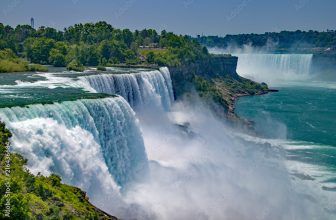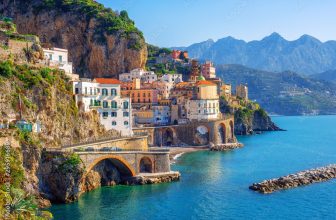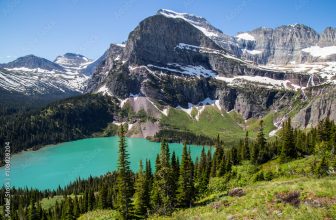
If you’re a history buff, you can’t miss visiting Florence. This city is bursting with masterpieces of Renaissance art. Visit the cathedral, which features a Giotto bell tower and terracotta-tiled dome, and the Galleria dell’Accademia to view Michelangelo’s David. The Uffizi Gallery houses da Vinci’s Annunciation and Botticelli’s The Birth of Venus.
The Renaissance in Florence
The capital of the Tuscany region, Florence is a major center of the Renaissance art movement. The city’s masterpieces include the Brunelleschi-designed dome and bell tower, Michelangelo’s David, and the Uffizi Gallery, which houses works by Botticelli and da Vinci, among others. Moreover, Florence is home to a number of museums and art galleries, including the famous Uffizi Gallery, where you can see the famous Annunciation by Leonardo da Vinci and Botticelli.
The Renaissance in Florence was a time when aristocrats and merchants became rich. The city became known as the fifth element of creation, and the Florentines were everywhere. They built their fortunes by producing and trading goods. They also played a major role in government, and the Medici family ruled as capo della repubblica. Their greatness was acknowledged by Pope Boniface VIII, who described them as the fifth element in creation.
While the Florentine enlightenment was largely a reaction to the prevailing civic culture, it grew out of the city’s civic values. Florentines felt as though they were descendants of Rome, and they sought to live up to the republican ideals of those cities. Moreover, they cherished the arts, especially the plastic ones, and valued human dignity. They also appreciated the importance of classical models in art and culture.
The Medici family
The Medici family in Florence is one of the most famous families in Italy. They were not nobles, and they weren’t even meant to rule the city. Despite their humble beginnings, they managed to build an empire based on their wealth and political power. They started by making a fortune in the Mugello Valley near Florence. Eventually, they became the unofficial rulers of the republic and the recognized sovereigns of Tuscany.
The Medici line continued to flourish under Cosimo I, who became duke of Florence and grand duke of Tuscany in 1537. Cosimo’s son, Lorenzo, served as duke, but he didn’t do much to make the family rich. His sons, Cosimo and Ferdinand, continued the family’s patronage of the arts. Their descendants would rule in Florence until the 1700s.
A visit to the Medici family in Florence is an important experience in the history of the city. Not only did the Medici family enjoy a comfortable lifestyle, but they hosted important artists as well. Leonardo da Vinci studied classical statues in the Medici gardens, and Michelangelo lived among them as a teenager. The lavishly frescoed family chapel transports visitors back to the Renaissance-era Florence. The walls of the altar feature the Journey of the Magi, depicting the Three Kings and their journey to Bethlehem.
Michelangelo’s David
Michelangelo spent two years sculpting the giant David. In 1475 he presented the Giant to the Vestry Board and to Pier Soderini, gonfaloniere of the Republic. This 14-foot-tall statue was initially unveiled to the Vestry Board only. Its beauty was deemed too perfect to place in the Cathedral, and the city council created a committee of thirty members to decide where to install it.
The statue is a symbol of defiance and the city’s enduring spirit. Michelangelo was born in Florence and the statue has long symbolized the city’s resistance to the city’s enemies. Its ownership dispute is a “petty matter,” which Bondi called outright in his statement. The Italian city hopes to avoid any controversy surrounding the statue. While a contested ownership status can result in a high level of tension, the decision was not finalized yet.
In 2003, the Friends of Florence, a nonprofit organization, began a relationship with the statue. During the restoration process, the Friends of Florence financed a series of tests on the statue, as well as an educational DVD for visitors. The Friends of Florence also recommended regular cleaning to keep the restoration’s effects longer. Using a soft brush or vacuum cleaner, they recommended cleaning the statue at least one day a month to monitor its condition and ensure it’s looking its best.
The river Arno
The Arno is one of the major rivers of central Italy. Its banks are filled with a variety of beautiful and historic buildings. If you’re planning a trip to Florence, make sure you take some time to explore the river and the city’s surrounding areas. Arno tours are available throughout the year. While you’re in Florence, be sure to take the time to view the many art and architecture treasures along its banks.
The Arno is the hometown river of Florentines and flows through the city from the main city gate. Because of its temperament, it divides Florence into two separate parts. The river has experienced over forty major or minor floods since the 13th century. You can walk, bike, and raft across the river to get a different perspective of the city. The river flows into the Tyrenian Sea. This natural wonder is well worth the trip.
The Arno is also an ideal location to go rafting. The river is a popular tourist destination, so you can get in on the action while passing under the Ponte Vecchio. The experience is a perfect blend of history and sport. Along the way, the expert guides will give you a fascinating history of the river and encourage you to snap a photo or two. If you’d like a more luxurious experience, consider staying at a five-star hotel near the river.
The city’s medieval city walls
The first walls of Florence were constructed between 15 and 30 B.C., with various expansions taking place over the centuries. The final wall dates back to the mid-16th century, though only a small portion of it still exists today in the Oltrarno district. The nineteenth century saw the walls on the north side of the Arno river demolished and replaced by boulevards, but remnants of the medieval city walls remain as doors and towers.
The city walls of Florence were built around 630 hectares, covering the whole city. Their perimeter measured about eight kilometers, and their gates were 35 meters high and decorated with religious frescoes. These walls once contained a statue of a famous Florentine poet or writer. However, in the Middle Ages, the city had grown to as many as seventy-five thousand people, and by the end of the thirteenth century, it was home to more than one hundred thousand. Because of these changes in the city, the walls were enlarged, and new suburbs began to form along the streets which had broken away from the wall of Rome.
The first city walls were built in 1147, but the southern part was completed around 1324. This last set of walls stopped at the arch where horses were tied. This arch was known as “Torre della Saggina” and is still visible today. Visitors can climb the tower during the summer months for spectacular views of the city. After the discovery of Clet in June 2012, the town-walls were restored to their medieval form.
The Scoppio del Carro
The Scoppio del Carro is one of Florence’s most enchanting festivals. A traditional Easter event, this firework show dates back to the late 1400s. The festival’s pyrotechnics and fireworks add to the historical spectacle. Hundreds of tourists attend to witness the event. The Scoppio del Carro is a great way to experience the real Florentine culture.
This tradition dates back to the First Crusade, when Europeans took over Jerusalem and claimed Palestine for Christianity. The Florence-based nobleman Pazzino di Ranieri de’ Pazzi was the first to scale the walls of Jerusalem and raise a Christian flag. The flints, which were taken from the Holy Sepulchre by Godfrey IV de Buillon, were later given to the Florentine family and used as symbols of new life.
The Scoppio del Carro is an annual celebration that takes place on Easter Sunday. Initially, a fire was created by slivers of stone. The resulting fire was carried to the religious center of Florence by a cart. As the tradition grew, it grew more elaborate and included fireworks set off by a dove of peace. Today, the Scoppio del Carro takes place in the city’s central square.
The Convent of Santa Maria del Fiore
The interior of the Convent of Santa Maria del Fiora is a delightful mix of medieval and modern. The soaring, domed apse is lined with paintings from the 18th century. The nativity scene, from about 1475, is a delight, and three windows on either side of the nave shine through the dark, flat ceiling. The church also features a grisaille panel depicting the Adoration of the Blessed Sacrament.
In the 12th century, a Dominican nun’s cloister housed the famous artists Fra Angelico and Savonarola. The convent was the site of several famous frescoes, including the Annunciation. This beautiful chapel was later given to the Augustinian Hermit friars of San Giovanni di Dio. The frescoes inside the convent are among the finest examples of their kind in Florence.
The cloister was extended by Father Andrea Castaldo in 1585. The building then became a parish church under Pope Leo X. It was then passed on to the Observant Franciscans in 1529 and then to the Carmelites in 1618. In 1620, the Carmelites began restoration work, and by 1667, it was complete. The church’s interior was designed by Giovanni Battista Baltri, while the dome was designed by Bastiano Messeri.







